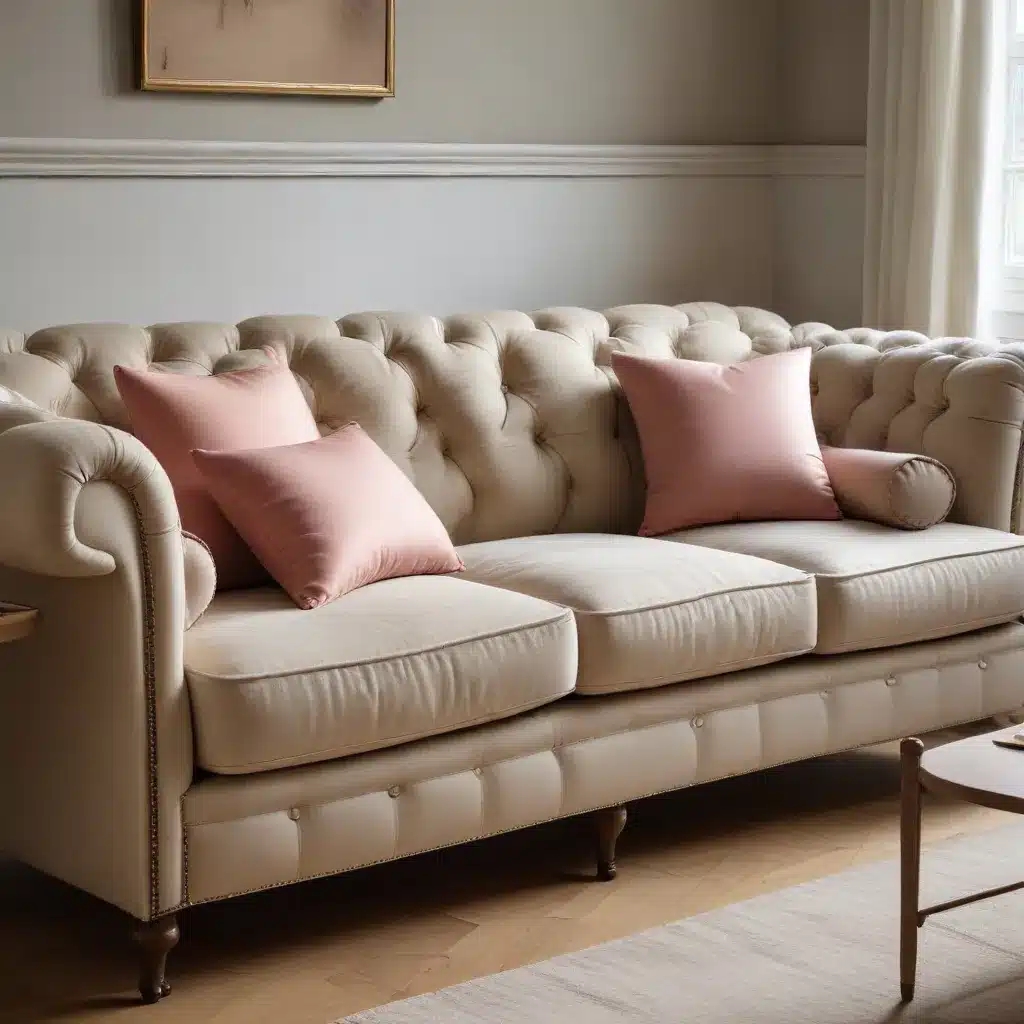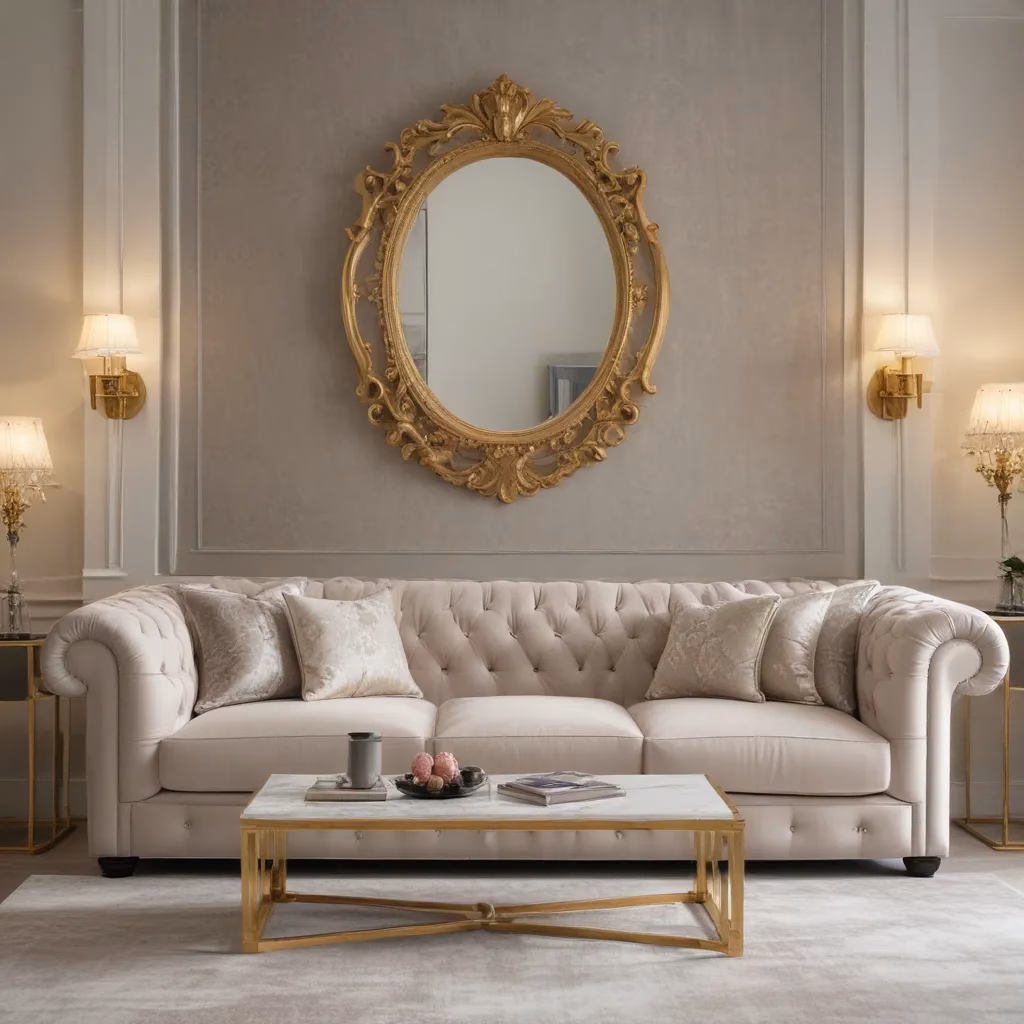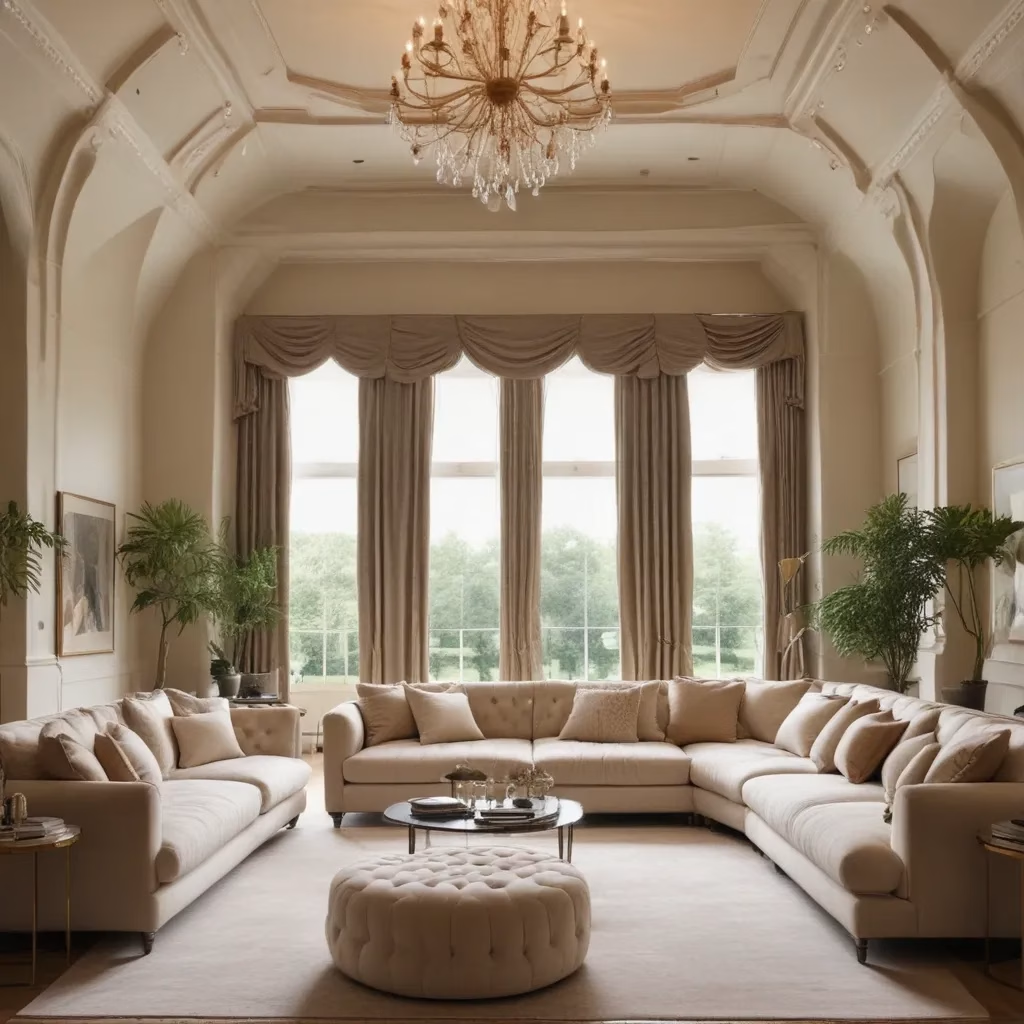
The Art of Sofa Selection
As a furniture specialist with years of experience, I’ve seen countless homeowners struggle with choosing the perfect sofa. It’s not just about picking a comfortable seat; it’s about finding a piece that complements your space, meets your needs, and stands the test of time.
When selecting a sofa, consider the room’s dimensions and layout. A common mistake I’ve observed is choosing a sofa that’s too large for the space, making the room feel cramped. On the flip side, a sofa that’s too small can look out of place in a spacious living area. Take accurate measurements of your room and the potential sofa placement before making a decision.
Fabric choice is another crucial factor. For homes with children or pets, I always recommend durable, stain-resistant fabrics like microfiber or leather. These materials are easier to clean and maintain, saving you headaches in the long run. If you prefer a more luxurious feel, velvet or silk can add a touch of elegance, but keep in mind they require more careful maintenance.
Upholstery Care: Preserving Your Investment
Once you’ve chosen your perfect sofa, proper care is essential to maintain its beauty and extend its lifespan. I’ve seen many beautiful pieces deteriorate prematurely due to neglect or improper cleaning techniques.
Regular vacuuming is the foundation of good upholstery care. Use a soft brush attachment to gently remove dust and debris from the fabric surface and crevices. For leather sofas, a slightly damp cloth can be used to wipe down the surface, followed by a dry cloth to prevent moisture absorption.
Addressing spills promptly is crucial. Blot – don’t rub – the affected area with a clean, white cloth to absorb as much liquid as possible. For water-based spills on fabric upholstery, a mixture of mild soap and warm water can be effective. Always test any cleaning solution on an inconspicuous area first to ensure it doesn’t cause discoloration.
Design Trends: Balancing Style and Comfort
The world of sofa design is ever-changing, but comfort remains a constant priority. In recent years, I’ve noticed a trend towards modular sofas that offer flexibility in seating arrangements. These pieces allow homeowners to reconfigure their living spaces easily, adapting to different needs and occasions.
Color trends have also evolved. While neutral tones like beige and gray remain popular for their versatility, I’ve seen an increasing interest in bold, statement colors. Deep blues, rich greens, and even vibrant oranges are making their way into living rooms, adding personality and flair to interior spaces.
Texture is another aspect that’s gaining attention. Mixed-material sofas, combining fabric upholstery with wooden or metal accents, are becoming more prevalent. These designs add visual interest and can bridge different style elements within a room.
Sustainable Choices in Sofa Selection
Sustainability is a growing concern in the furniture industry, and I’m glad to see more homeowners considering eco-friendly options. When selecting a sofa, look for pieces made with sustainably sourced materials and non-toxic finishes.
Some manufacturers are now offering sofas made with recycled fabrics or filled with eco-friendly materials like soy-based foam. These options not only reduce environmental impact but often provide excellent durability and comfort.
Another sustainable approach is to choose sofas with removable, washable covers. This feature extends the life of your sofa by allowing for easy cleaning and even complete cover replacement, reducing the need for full sofa replacement due to wear and tear.
Space-Saving Solutions for Small Living Areas
In urban environments where space is at a premium, I often recommend multi-functional sofas. Sofa beds are a classic choice, providing a comfortable seating option by day and a guest bed by night. Modern designs have come a long way in terms of comfort and ease of use.
Storage sofas are another excellent option for small spaces. These pieces feature hidden compartments under the seats or in the arms, perfect for stowing away blankets, magazines, or other living room essentials. It’s a practical way to reduce clutter without sacrificing style.
Corner sofas or L-shaped designs can maximize seating in compact rooms. They utilize corner spaces efficiently and can create a cozy, intimate atmosphere in your living area.
The Impact of Lighting on Sofa Appearance
Lighting plays a significant role in how your sofa looks and feels within a space. Natural light can enhance the color and texture of your upholstery, but it’s important to consider potential fading over time. If your sofa is placed near windows, consider using UV-protective window films or strategically placed curtains to minimize sun damage.
Artificial lighting can dramatically affect the appearance of your sofa. Warm, soft lighting can make a room feel cozy and inviting, while cooler, brighter lights might be better for reading or detailed tasks. Experiment with different lighting options to find the perfect balance for your space and sofa style.
The Psychology of Sofa Placement
The way you position your sofa can significantly impact the atmosphere and functionality of your living space. In my experience, the sofa is often the focal point of a living room, and its placement can influence social interactions and the overall flow of the room.
Placing the sofa facing the room’s entrance can create a welcoming atmosphere, inviting guests into the space. Alternatively, positioning it to face a window or fireplace can create a cozy, contemplative environment. In open-plan living areas, using the sofa as a room divider can help define separate functional zones without the need for walls.
Consider the conversation flow when arranging your sofa and other seating. A U-shaped or circular arrangement encourages interaction, while a more linear setup might be better for TV viewing. The key is to create a layout that supports your lifestyle and the way you use your living space.
Accessorizing Your Sofa
The right accessories can transform your sofa from a simple seating option to a stunning centerpiece. Throw pillows are an easy and cost-effective way to add color, texture, and personality to your sofa. Mix and match different sizes, shapes, and patterns for a dynamic look.
A well-chosen throw blanket can add warmth and coziness to your sofa, both visually and functionally. Opt for materials that complement your upholstery and suit the season – lightweight cotton for summer, and chunky knits or faux fur for winter.
Don’t forget about the space around your sofa. A side table for drinks and books, a floor lamp for reading, or a carefully placed artwork above can all enhance the overall aesthetic and functionality of your sofa area.
Professional Cleaning: When and Why
While regular maintenance is crucial, professional cleaning can revitalize your sofa and extend its lifespan. I recommend professional cleaning every 12-18 months, depending on usage and the presence of pets or children in the home.
Professional cleaners have specialized equipment and cleaning solutions that can penetrate deep into the upholstery, removing dirt and allergens that regular vacuuming can’t reach. They can also apply protective treatments to guard against future stains and spills.
For leather sofas, professional conditioning treatments can help maintain the material’s suppleness and prevent cracking or fading. Always choose a cleaner experienced in handling your specific upholstery type to ensure the best results.
The Role of Sofas in Home Staging
As a furniture specialist, I’ve often been consulted on home staging projects. The sofa plays a crucial role in creating an inviting atmosphere that potential buyers can envision themselves living in.
When staging a home, neutral-colored sofas are typically preferred as they appeal to a wider range of tastes and allow buyers to imagine their own style in the space. However, a few carefully chosen accent pillows can add pops of color and personality without overwhelming the room.
The size and style of the sofa should be appropriate for the space and the home’s overall aesthetic. An oversized, plush sofa might look out of place in a sleek, modern apartment, while a minimalist design could feel cold in a traditional family home.
Sofa Fabrics: A Closer Look
The choice of fabric can make or break your sofa experience. Let’s dive deeper into some popular upholstery options:
-
Cotton: Natural, breathable, and comfortable, cotton is a versatile choice. It’s easy to clean but can wrinkle and fade over time.
-
Linen: Another natural fiber, linen offers a relaxed, casual look. It’s durable but can wrinkle easily and is prone to staining.
-
Leather: Durable and easy to clean, leather ages beautifully but can be cold to the touch and may not be suitable for households with pets.
-
Microfiber: A synthetic option that’s soft, durable, and stain-resistant. It’s an excellent choice for homes with children or pets.
-
Velvet: Luxurious and soft, velvet adds a touch of glamour but requires careful maintenance and can show wear patterns over time.
When choosing a fabric, consider not just the appearance but also the feel, durability, and maintenance requirements. A fabric that looks beautiful but isn’t comfortable or practical for your lifestyle won’t be satisfying in the long run.
The Ergonomics of Sofa Design
Comfort isn’t just about soft cushions; it’s about supporting your body properly. A well-designed sofa should provide adequate support for your back, neck, and legs.
The seat depth is a crucial factor. A depth of 21-22 inches is generally comfortable for most people, allowing you to sit back fully while keeping your feet on the ground. The seat height should allow your feet to rest flat on the floor with your knees at a 90-degree angle.
For sofas that will be used frequently for lounging or napping, consider options with chaise sections or reclining features. These allow for greater flexibility in seating positions and can provide full-body support when lying down.
Sofa Frames: The Hidden Foundation
While upholstery gets all the attention, the frame is the backbone of your sofa. A high-quality frame ensures your sofa will maintain its shape and support over time.
Hardwood frames, particularly those made from kiln-dried wood, are considered the gold standard. They’re sturdy and resistant to warping. Avoid sofas with frames made from particleboard or metal, as these can weaken over time.
The joints of the frame should be glued, dowelled, and screwed for maximum strength. Avoid frames held together solely with staples or nails, as these connections can loosen over time, leading to squeaks and instability.
Custom Sofas: Tailoring to Your Needs
For those with specific requirements or unique spaces, custom sofas can be an excellent solution. I’ve worked with many clients to create bespoke pieces that perfectly fit their homes and lifestyles.
Custom sofas allow you to choose every aspect of the design, from the dimensions and shape to the filling type and fabric. This level of customization ensures that your sofa not only fits your space perfectly but also meets all your comfort and style preferences.
While custom options can be more expensive upfront, they often provide better value in the long run. A well-made custom sofa can last for decades, adapting to your changing needs and styles over time.
The Environmental Impact of Sofa Production
As consumers become more environmentally conscious, it’s worth considering the ecological footprint of your furniture choices. Traditional sofa production can involve harmful chemicals, non-sustainable materials, and significant energy consumption.
Look for manufacturers who prioritize sustainable practices. This might include using recycled or sustainably sourced materials, employing low-VOC (Volatile Organic Compound) finishes, and implementing energy-efficient production methods.
Some companies are now offering take-back programs, where they’ll recycle or repurpose your old sofa when you purchase a new one. This helps reduce landfill waste and promotes a more circular economy in the furniture industry.
Sofa Trends: Looking to the Future
As we look ahead, several exciting trends are emerging in sofa design:
-
Smart Sofas: Incorporating technology like built-in charging ports, adjustable lighting, or even massage features.
-
Biophilic Design: Sofas that incorporate natural elements or materials, reflecting a growing desire to connect with nature in our living spaces.
-
Multifunctional Pieces: Sofas that transform into dining tables, workstations, or beds, catering to the needs of flexible living spaces.
-
Sustainable Luxury: High-end sofas made with eco-friendly materials and processes, proving that sustainability and luxury can go hand in hand.
-
Curved Shapes: Moving away from traditional straight lines, curved sofas are gaining popularity for their soft, inviting appearance and ability to create intimate seating areas.
While trends come and go, the fundamentals of quality construction and comfort remain constant. Choose a sofa that resonates with your personal style and meets your practical needs, and it will serve you well for years to come.
Conclusion: Your Perfect Sofa Awaits
Selecting and maintaining the right sofa is a blend of art and science. It requires careful consideration of your space, lifestyle, and personal preferences. Remember, a sofa is more than just a piece of furniture; it’s the heart of your living space, where memories are made and daily life unfolds.
Whether you’re in the market for a new sofa or looking to breathe new life into your existing piece, I hope this guide has provided valuable insights and practical tips. For more expert advice and a wide selection of quality sofas, visit Sofa Spectacular. Your perfect sofa is out there, ready to bring comfort, style, and functionality to your home for years to come.



